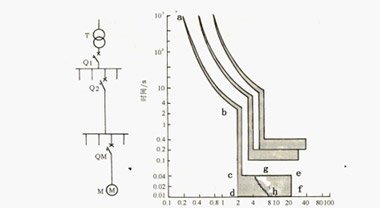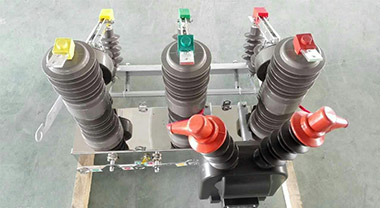Design and selection principles of low-voltage circuit breakers
When designing and selecting low-voltage circuit breakers, the general principles that need to be considered are:
- Determine the type of circuit breaker selected according to the load nature, fault category and line protection requirements of the low-voltage power distribution system, and comply with the current relevant national standards.
- The rated voltage and frequency of the circuit breaker should be compatible with the nominal voltage and nominal frequency of the circuit.
- The rated current of the circuit breaker should not be less than the calculated load current of the circuit.
- The circuit breaker should adapt to the environmental conditions of the site.
- The circuit breaker should meet the requirements of dynamic stability and thermal stability under short-circuit conditions.
When used to disconnect short-circuit current, it should meet the making and breaking capacity under short-circuit conditions. Low-voltage circuit breakers should choose the appropriate protection form according to different fault categories and specific engineering requirements. The setting principles generally include:
- When the circuit breaker is in normal use and when the electrical equipment starts normally, the installed protection should not operate.
- The most fundamental task of the circuit breaker is to play a protective role. It must be able to effectively cut off the faulty circuit within the specified time. Meet the most basic requirements of the specification.
- The protective action characteristics of the circuit breakers at all levels of the low-voltage power distribution system should be able to coordinate with each other. There should be selective action, that is, when a fault occurs, the circuit breaker protection close to the fault point should be cut off first, and the upper part close to the power supply side should be cut off first. The primary protection should not be activated, and the power outage range should be reduced as much as possible.
In the low-voltage power distribution system, the main design task is to select the protective electrical appliances reasonably, according to the requirements of the circuit breaker's setting principles, through correct setting of its parameters to achieve various protection functions, but these setting principles may contradict each other.
The rated current or setting current of the circuit breaker is limited by items ① and ② of the setting principle, and the speed of the protection action is restricted by items ② and ③ of the setting principle, so it must be accurately calculated and carefully verified , Coordinate the contradictions between each other, realize the unity of opposites, in order to comply with the relevant requirements of the operating characteristics, operating time and selective protection specified in the specification.




